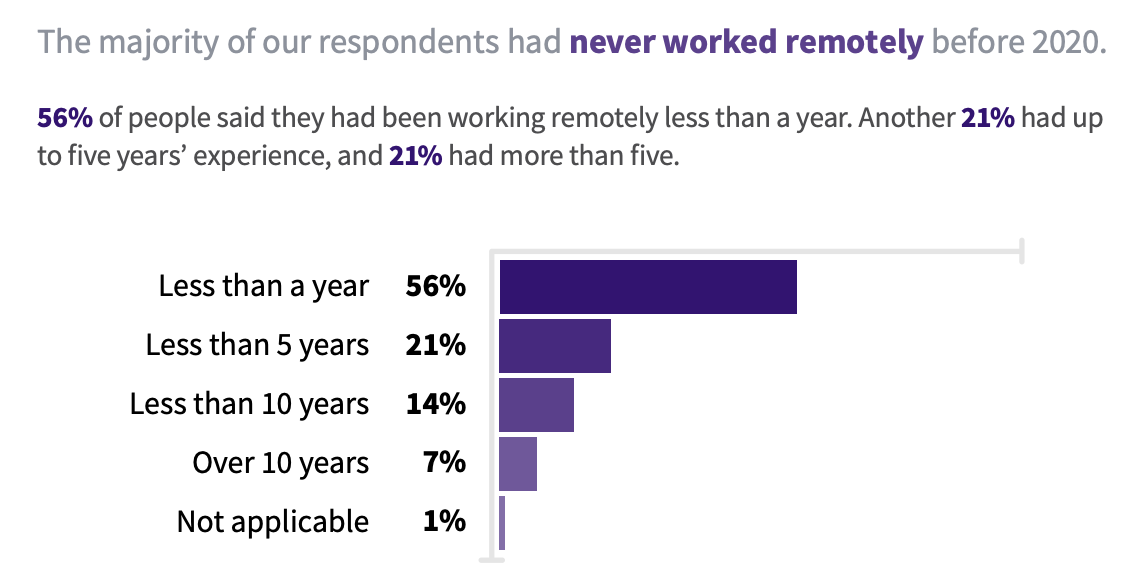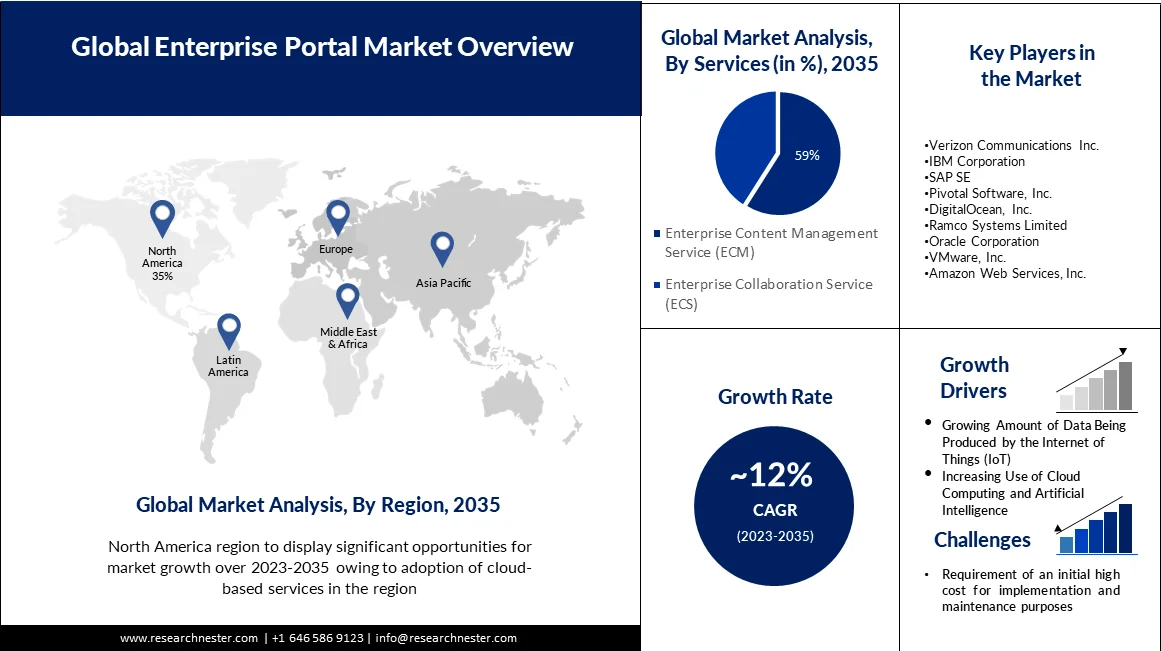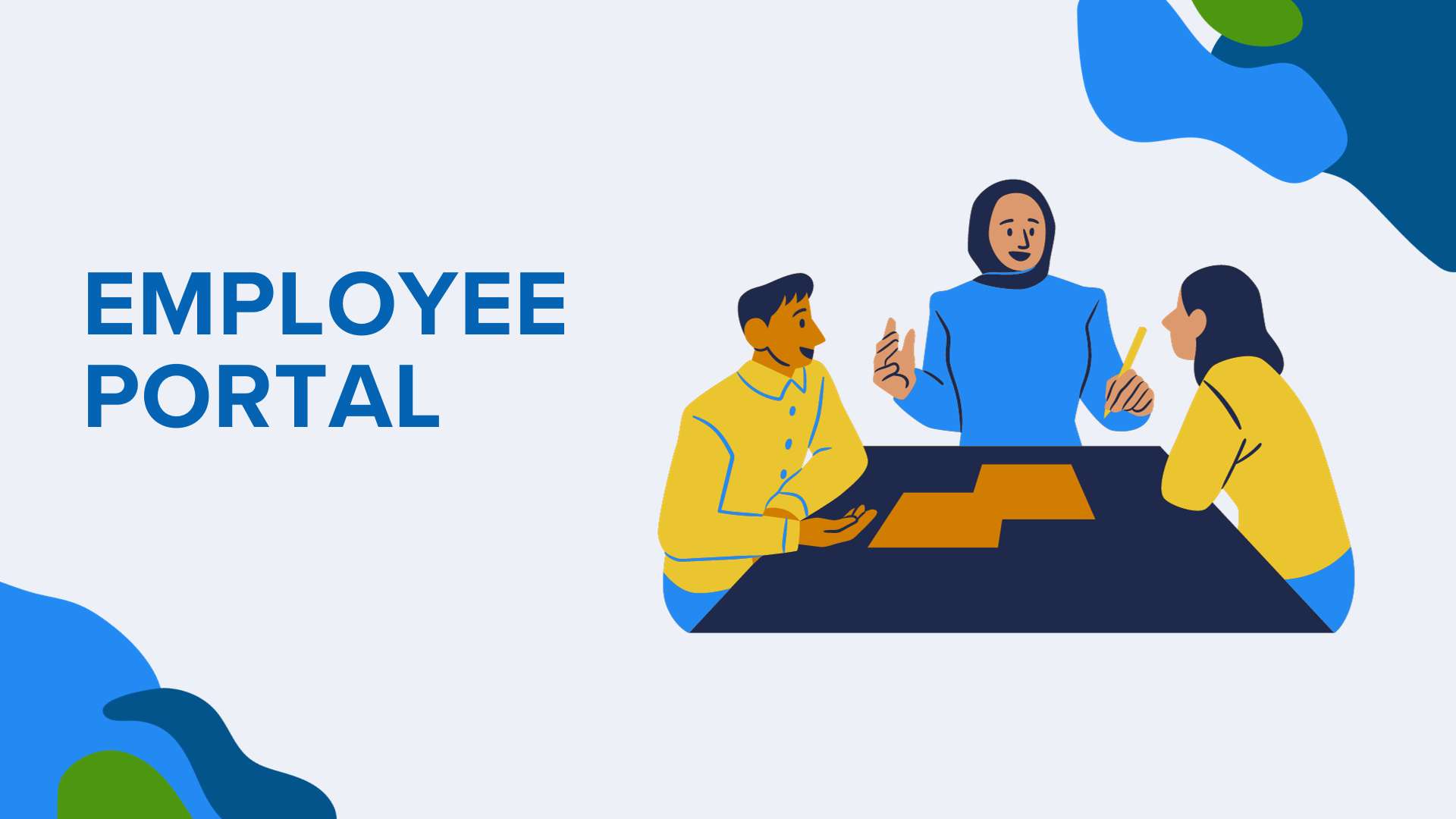Imagine a world where every piece of vital information, every necessary tool, and every critical update your employees need is just a click away – no matter where they are in the world. With over 25% of the US workforce now embracing remote or hybrid work models, the traditional office landscape is transforming rapidly. In this ever-evolving scenario, an employee web portal becomes more than just a digital convenience – it's the linchpin that holds together the diverse threads of a modern workplace.
But how do you create a web portal that's not only efficient and comprehensive but also engaging and easy to navigate? Whether you're grappling with multiple office locations, a remote workforce, or a hybrid arrangement, the challenges in keeping your team connected, informed, and productive remain constant. In this comprehensive guide, we'll walk you through the intricacies of creating an employee web portal that not only meets these challenges head-on but turns them into opportunities for enhanced collaboration and streamlined communication. Let's dive into and transform how your team connects and thrives!

Image sourced from GitLab
Whatever your reason for having staff in different locations, there are several challenges that face you when it comes to ensuring their work remains productive and efficient. One of the primary challenges is communication, both between management and staff and between staff themselves. Knowing how to create an employee web portal can help overcome that challenge.
What Is a Web Portal?
Think of a web portal as the digital heartbeat of your organization, a centralized platform pulsating with vital information, accessible exclusively to those who hold the keys - your employees. It resembles a multi-roomed house; each room, or section, is dedicated to different types of information. Imagine a room buzzing with the latest company news, another where a rich knowledge base lies, offering nuggets of wisdom like a 'data privacy vs security' explainer.
This portal isn't just a repository of information; it's a dynamic space tailored to individual needs. Picture a private room where only managers can step in, containing specialized content just for their eyes. It's about creating personalized experiences within a unified framework.
The web portal extends beyond information sharing. It's where services converge - a place where employees can effortlessly record their time sheets, reducing the labyrinth of systems they need to navigate daily. This centralization is not just about bringing everything under one roof; it's about simplifying processes, cutting down on the clutter of multiple touchpoints, and enhancing efficiency.
Initiating the process of creating such a portal means considering various steps, each tailored to the unique rhythm of your organization. Let's explore how to weave this digital tapestry, stitch by stitch, into a cohesive, functional, and user-friendly employee web portal.
Steps on How to Create an Employee Web Portal

Image sourced from marketresearchfuture.com
Identify and List Your Goals
Before diving into the technicalities of creating a web portal, it's crucial to anchor your strategy in clear goals. Start by asking the fundamental questions: What are the objectives of your web portal, and who is it designed to benefit? In this context, our focus is a portal that caters seamlessly to your employees, irrespective of their geographical locations. This answers the 'who' – but what about the 'why'?
Consider the existing landscape of your organization. If your staff is dispersed, working remotely or in a hybrid pattern, you're likely already leveraging certain tools to mitigate the challenges of these models. Perhaps you're using a contact center CRM for virtual call center agents or a robust communication platform that keeps staff connected and collaboration alive.
The question then arises: What unique role will a web portal play in this ecosystem? A well-constructed web portal serves as a centralized hub, a digital nexus that simplifies access to a wide array of resources. Imagine a comprehensive knowledge base at the fingertips of your staff, or a direct channel for the C-suite to disseminate crucial updates and company news to everyone simultaneously. A web portal can revolutionize the way information and communication flow within your organization, ensuring that every member of your team, regardless of their location, feels connected and informed.
Research
Venturing into the creation of an employee web portal can seem overwhelming, especially if this concept is new to you. You likely have a clear goal in mind, but turning that concept into a tangible reality requires a strategic approach. How do you navigate from the initial idea to a fully operational portal? A key step in this journey is thorough research, beginning with an examination of existing web portals.
Many employee web portals, although customized and access-restricted, have counterparts or versions that are publicly viewable. Studying these can offer invaluable insights into their design choices, functionalities, and overall user experience. Observing these examples can inspire ideas and help you discern which elements align with your vision and which do not.
Additionally, leveraging your professional network can be incredibly fruitful. Engage with peers and colleagues from various industries. Leaders and managers often understand the value of knowledge exchange and might be willing to provide a glimpse into their own web portals. This access can offer a practical understanding of how diverse organizations utilize these platforms to meet their specific needs.
Research case studies and organizations with employee portals. Exploring the transformative impact of well-designed employee portals, several case studies stand out for their innovation and effectiveness. For instance:
- BASF, a leading chemical company, revolutionized their digital landscape by adopting an employee portal that streamlined internal processes and fostered a more connected workforce, as detailed in their case study.
- Heineken, a global brewing powerhouse, also leveraged an employee portal to enhance communication and operational efficiency, creating a more cohesive and informed company culture, as highlighted in their case study.
- The Army Senior Executive Portal exemplifies a unique approach to internal communications, providing a secure and efficient platform for senior leaders in the military, which is thoroughly explored in their case study.
Each of these instances underscores the significant benefits that a well-structured employee portal can bring to an organization, from improving information flow to strengthening community ties among employees.
As you investigate these resources, begin to formulate a more defined concept of what your ideal web portal looks like. Ensure that this vision aligns with the objectives you have for your portal. This research phase is not merely about collecting information; it’s about constructing a foundational blueprint that will inform the development of a web portal that embodies your organization’s unique ethos and goals.
List the Portal Features
Before initiating discussions with designers or developers, it's essential to transform the goals you've identified into specific features for your portal. These features should not only manage and streamline content but also boost user engagement. Consider including the following:
- User Authentication/Login: To ensure secure, personalized access, implement an authentication or login process. For added security, especially if handling sensitive data, consider two-step authentication.
- Content Management System (CMS): If you're already using a CMS for your external website, integrating one into your employee portal is a wise choice. This allows administrators to efficiently manage content, including adding, editing, or deleting as necessary.
- Integration with Social Media: If appropriate, enable employees to share portal content on social media platforms. This feature is particularly useful for spreading significant company news, like winning a major contract.
- Search Options: As your portal's content repository expands, robust search functionality becomes critical. This ensures employees can quickly locate the information they need, particularly within a comprehensive knowledge base.
- Chat Options: To supplement existing communication platforms, incorporate a chat function in your portal. This feature fosters direct connections and conversations among employees.
- Integration with Applicant Tracking System: For organizations with regular hiring needs, integrating your web portal with an applicant tracking system can significantly streamline the recruitment process. This allows for efficient management of job postings, applications, and communication with candidates.
- Analytics and Reporting: Understanding user interaction with your portal is crucial. Implement analytics tools to generate comprehensible reports, providing insights into user engagement and guiding future improvements.
- Performance Appraisal Software: Consider including software for performance evaluations and feedback. This integration can simplify the performance review process, offering a centralized approach for assessments and goal tracking.
Each of these features should align with your portal's overall objectives, ensuring a seamless, user-friendly, and efficient experience for your employees.
Decide on a Team
With your goals set and desired features outlined, it's time to assemble the dream team that will bring your employee web portal to life. If you have the luxury of an in-house team skilled in web design and development, they could be your go-to. However, if this expertise isn't available internally, outsourcing is a viable path. Platforms like Concrete CMS offer the tools needed to craft a high-quality portal with ease.
But remember, building the portal is just the beginning. You'll need a dedicated crew to manage and maintain it. Typically, this includes at least two administrators – a primary and a backup – to ensure smooth operation. Additionally, consider roles for content creation, monitoring, and design, crucial for a dynamic and engaging portal. If you're aiming to include a comprehensive knowledge base, gather a team capable of developing relevant content and documentation, such as detailed guides or basic glossaries on specific topics like data sharing.
Choose Your UX Design
In the digital world, user experience (UX) is king. Think about how your team interacts with various tools, from your public-facing website to internal software like power dialers. The UX of your employee portal is no less important, and this is where your development team will be invaluable. While you may not be versed in the nitty-gritty of wireframes and design prototypes, your vision for the portal’s functionality is key. Regular meetings with the developers will ensure that everyone is aligned in crafting a portal that’s not only visually appealing but also intuitive and user-friendly. The aim is to streamline the employee experience , eliminating any potential friction points.
And Go!
Almost there! Before your portal goes live, it's crucial to conduct thorough testing. Let your development team lead the charge, checking everything from code integrity to feature functionality. Remember, the devil is in the details.
But don't stop there. Consider user testing to gauge real-world usability. Similar to the approach for an ecommerce website, this step can provide valuable insights into how actual users interact with the portal. Regular content monitoring and A/B testing are also excellent strategies to continually refine and improve the portal experience.
The Takeaway
Whether your team is spread across different locations or working remotely, the challenges of staying connected are real. An employee web portal isn’t just a nice-to-have; it's a strategic solution that centralizes communication and resources, bridging gaps regardless of where your staff is located. By understanding how to create an effective portal, you’re not just overcoming geographical challenges; you’re uniting your workforce under a single digital roof, creating a cohesive, informed, and engaged organizational community.
